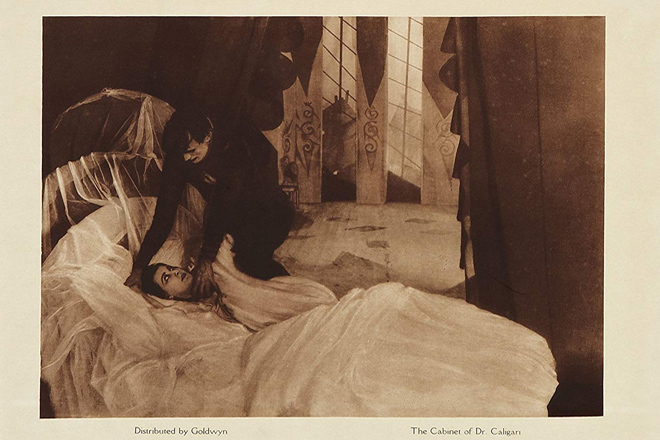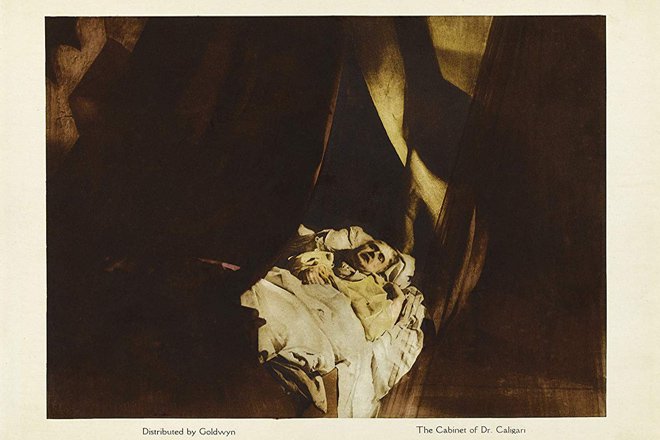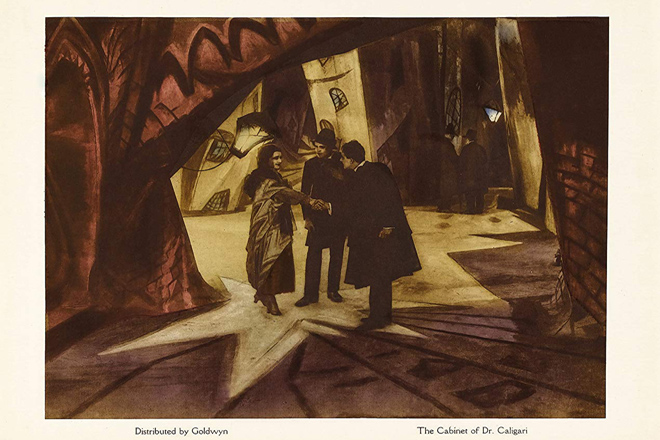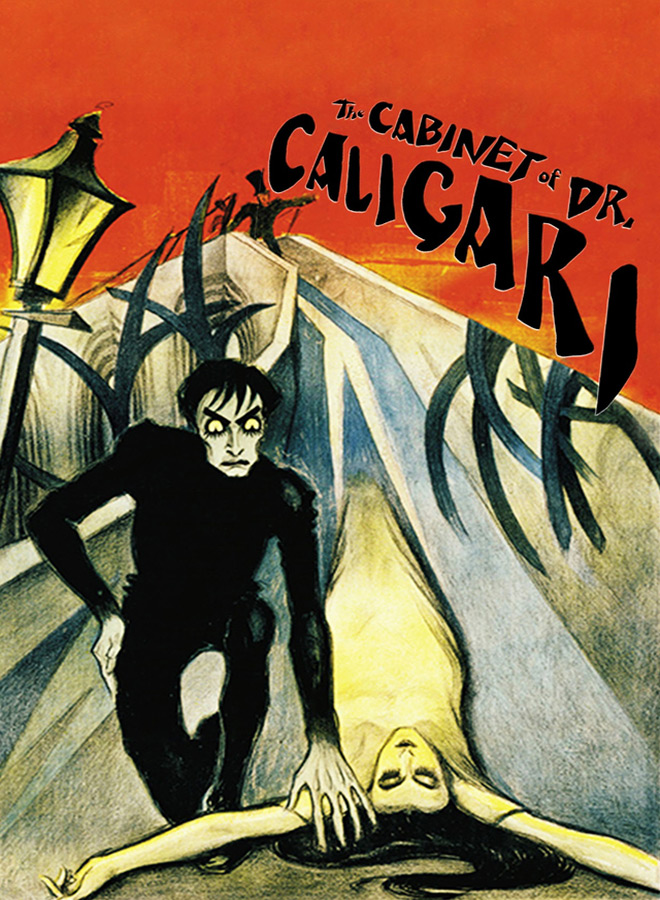The 2000s and 2010s saw a few early entries reach their centenaries, like Paul Wegener’s The Golem from 1915 along with early films from Charlie Chaplin. However, the 2020s will be when cinema’s biggest early classics hit their triple digit anniversaries. There is Harold Lloyd dangling off the clock in 1923’s Safety Last! and Max Schreck rivaling Dracula in 1922’s Nosferatu. Or one German film about a sympathetic monster, a calculating villain, and the people caught between them. That would be the 1920 German silent Horror film The Cabinet of Dr. Caligari which turns 100-years-old on February 26, 2020.

Regarded as one of the finest works from Director Robert Wiene (The Knight of the Rose 1925, L’autre 1930), it is an artistic success in both looks and storytelling, and perhaps the first Psychological Horror ever put to film. In the movie, a young man named Franzis (Friedrich Feher: Emilia Galotti 1913, The Robber Symphony 1937) revealed what happened to him and his fiancée Jane (Lil Dagover: Destiny 1921, Rosen im Herbst 1955) in the village of Hostenwall. The annual fair reveals a new exhibit; the Cabinet of Dr. Caligari. The titular doctor (Werner Krauss: The Burning Soil 1922, Paracelsus 1943) would reveal that it contains Cesare (Conrad Veidt: The Man Who Laughs 1928, Casablanca 1942), a mysterious sleepwalker kept in a trance under Caligari’s hypnotism.
When Francis’ friend Alan (Hans Heinrich von Twardowski: Crown of Thorns 1923, The Scarlet Empress 1934) asked him what his future would be, Cesare said he would be dead by dawn. By the next day, his prophecy proved true. Francis thinks Cesare did it under Caligari’s orders. Is he right or is there more to it than that?
The film has color filters every now and then to add mood, but it is otherwise a film of its time; black and white and silent. The expressive acting is also more theatrical and less Stanislavski yet it holds up quite well today, especially compared to some of its contemporaries. Check out the double-speed carriage in Nosferatu and try not to hum ‘Yakety Sax.’

Part of this might be down to the film’s look. It often utilizes painted light sources along with shadows and objects on angular, surreal sets. This was more to save on cash than out of pure art, yet it resulted in a unique-enough and inspiring style that has lasted throughout the ages. In fact, its influence shows up particularly in the early works of Tim Burton – be it in Gotham City’s architecture in 1989’s Batman or his location and character designs for 1993’s The Nightmare Before Christmas.
However, it has more going for it than art. The Cabinet of Dr. Caligari tells a compelling story focusing on cerebral thrills and chills. Dr. Caligari uses his hypnotism to make Cesare commit acts on his behalf, including murder. Then things get complicated once he commands him to kidnap Jane. Krauss’ Caligari is a sinister, straight-up villain, but Veidt’s Cesare is a more sympathetic, tortured figure. Each of these sides become more apparent as Cesare’s feelings for Jane break through Caligari’s influence.
It is enough to pull the audience in as the mystery progresses, and the net gradually tightens around Caligari’s trail. As it nears the end, the film really gets the viewer looking forward to seeing Franzis get his retribution against the doctor – yet there is a twist in its tail. Caligari is one of the earliest examples of the unreliable narrator trope in cinema. Was it real? Was it a dream? It could go either way, especially when one more figure turns up before the end.

This twist was not intentional as Writers Carl Mayer (The Last Laugh 1924, Sunrise 1927) and Hans Janowitz (Der Januskopf 1920, Ewiger Strom 1920) had planned on having a more straightforward tale where the Doctor gets what is coming to him. But, as accounts go, the censors of Weimar, Germany did not approve of an authority figure being a villain. It might get people questioning who the Caligari in real life was. So, with Wiene’s permission (but not Mayer or Janowitz’s), the story was altered into something more ambiguous.
There is a debate on how far these rewrites went, even after the Deutsche Kinemathek got a copy of the original script from Krauss’ estate. Accounts of the film’s development overall are disputed due to the number of people giving differing stories of how involved they or others were. But, while the twist is a little jarring, it works out surprisingly well when one is watching the film. It does not disrupt the pace and actually makes one think twice about the preceding events. Compared to modern examples, like 2017’s Ghost Stories, or tons of online creepypastas, Caligari’s twist is a much smoother, more convincing transition.
Overall, The Cabinet of Dr. Caligari is not without its flaws, though few films in both the 1920s, and up to the 2020s, have topped it in psychological shocks. However, its chilling atmosphere, eerie look and compelling plot still hold up 100 years later- doing more with title cards, expressions and set designs than many other films do with every tool under the sun. It was not only one of Horror cinema’s first big steps, but a giant leap forward for the genre. Appealing to both movie buffs, arthouse aficionados, and regular film fans, the film can be found on DVD, Blu-ray, and even YouTube. Give it a go sometime and see how film history can still feel so alive even after 100 years!





